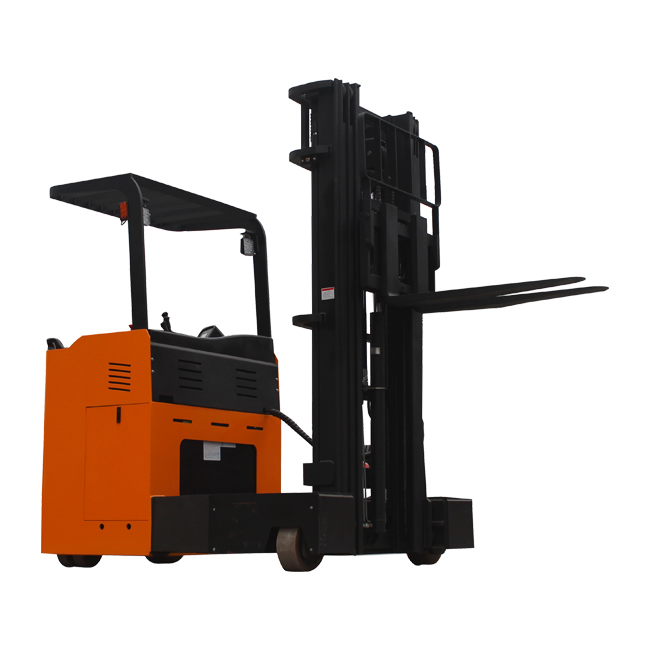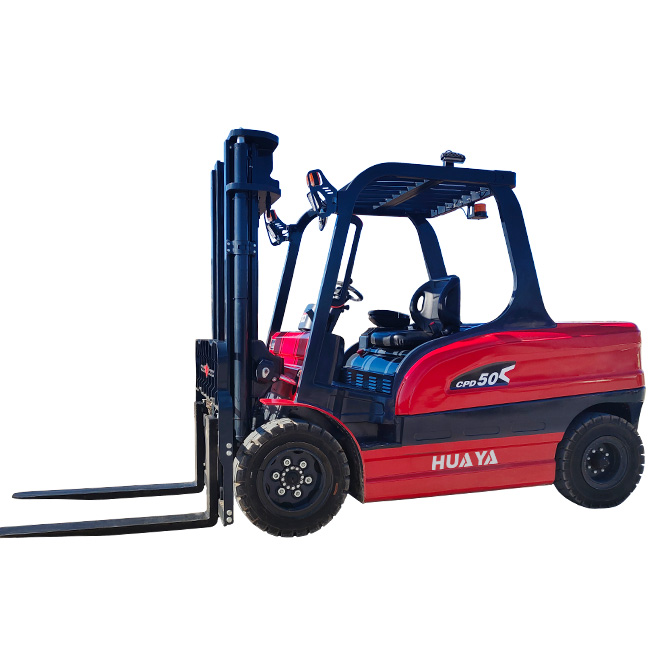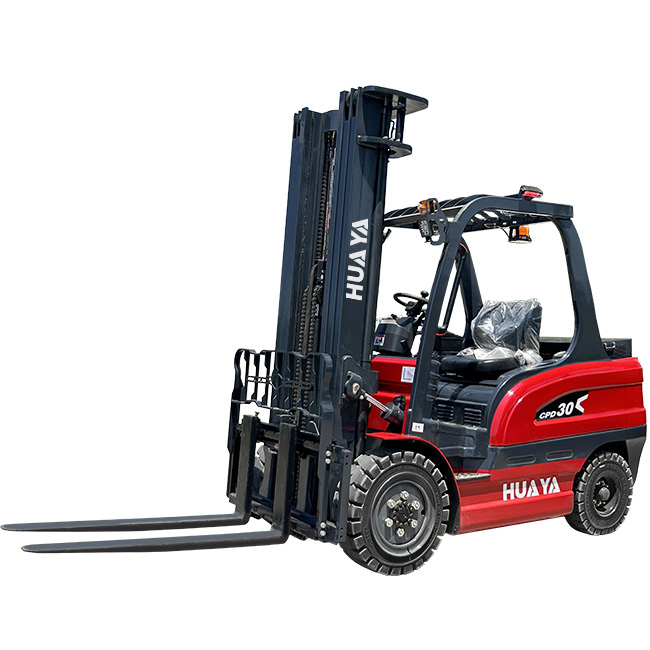What Class Is a Reach Forklift?
22 Aug 2025
A reach forklift—often called a reach truck—belongs to Class II: Electric Motor Narrow Aisle Trucks under the standard industrial truck classification used across the materials handling industry. Class II trucks are specifically engineered to work in tight spaces with high racking, which is exactly where reach forklifts excel. Their defining capability is the extendable/retractable mast or pantograph mechanism that lets the forks “reach” into racks while the truck body stays stable in the aisle.
That reach forklifts are Class II helps buyers, operators, and safety managers align training, maintenance, and application choices with the right standards. It also clarifies how these trucks differ from other classes like Class I (electric rider), Class III (electric hand trucks), Class IV (ICE cushion tire), and Class V (ICE pneumatic tire) units.
Why Reach Forklifts Are Classified as Class II
Class II is all about narrow aisle efficiency. Typical aisles for reach trucks range from 8–10 feet (≈2.4–3.0 m), depending on load size and facility design. Reach forklifts reduce aisle width requirements by keeping the truck’s main chassis centered while the mast or forks extend into the pallet position. That design lowers the turning radius and allows warehouses to pack more pallet positions per square foot—boosting storage density.
Characteristics that anchor reach trucks in Class II:
Electric power (battery-driven), yielding lower emissions and quiet operation—ideal for indoor environments.
Narrow aisle focus with exceptional maneuverability and precise load handling at height.
High-lift capability—common lift heights exceed 30 ft (≈9 m), and high-reach models can go beyond that, depending on capacity and mast.
Stability aids such as straddle legs, outrigger arms, or pantograph reach mechanisms are used to maintain load balance without wide aisles.
Types of Reach Forklifts (Within Class II)
While all reach trucks are Class II, there are several subtypes tailored to different tasks:
Single-Reach (Pantograph)
Forks extend once to access the first pallet position.
Balanced mix of capacity, speed, and simplicity.
Deep-Reach (Double-Reach)
An extended pantograph to place/retrieve pallets two positions deep.
Increases storage density but typically reduces residual capacity at height.
Moving Mast Reach
Instead of pantograph forks, the mast slides forward/back.
Often favored for capacity retention and mast rigidity.
Stand-Up Counterbalance (Narrow Aisle)
Not a reach mechanism per se, but some Class II designs combine stand-up operation and compact frames for tight aisles.
Turret / Swing-Reach Trucks
Forks rotate 90–180° to pick from either side without turning the truck.
Excellent for very narrow aisles (VNA), often 6 ft (≈1.8 m) or less, and high-rise distribution centers.
Typical Applications
Distribution centers and high-bay warehouses with tall racking and tight aisles.
Food & beverage and cold storage (with conditioned components and cold-rated batteries).
Retail replenishment and e-commerce fulfillment, where fast, precise case/pallet handling is vital.
Pharmaceutical and packaged goods where clean, quiet, and emission-free indoor operation is essential.
Core Specifications You’ll See
While models vary by brand and configuration, these are common reach forklift specs to evaluate:
Load Capacity: Common ranges are 2,500–5,500 lb (≈1,134–2,495 kg); higher or lower options exist.
Lift Height: Often 25–42 ft (≈7.6–12.8 m); very high reach models may exceed this.
Aisle Width (Right Angle Stack): Frequently 8–10 ft (≈2.4–3.0 m) depending on load dimensions.
Travel & Lift Speeds: Optimized for cycle times; advanced models offer programmable performance modes.
Battery Type: Lead-acid (lower upfront cost) or lithium-ion (fast charging, high uptime, reduced maintenance).
Operator Position: Most reach trucks are stand-up with a side stance for visibility in both directions.
Mast / Pantograph: Single- or double-reach, with sensors and damping for stability at height.
Advantages of Class II Reach Forklifts
Space Utilization
Narrow aisles mean more pallet positions and higher storage density.
Precision at Height
Mast damping, reach sensors, and fine controls enable accurate placement.
Lower Operating Emissions
Electric power suits indoor air quality requirements and noise sensitivity.
Operator Productivity
Side-stance cabins and excellent visibility support quick directional changes.
Energy Efficiency
Regenerative braking and lift-lower systems on many models reduce energy draw.
Potential Limitations to Consider
Floor Conditions
Reach trucks expect flat, smooth floors; rough surfaces reduce stability and speed.
Primarily Indoor Use
Not ideal for uneven outdoor yards; for outdoors, Class V pneumatics or rough-terrain forklifts are better.
Capacity at Height
Residual capacity declines as height increases, especially with double-reach.
Initial Setup
To maximize benefits, facilities may need a rack and aisle layout designed specifically for reach operations.
Battery Strategy
Choosing between lead-acid (lower cost, more maintenance) and lithium-ion (higher cost, faster charge) affects TCO and uptime.
How Class II Differs from Other Classes (Quick Comparison)
Class I (Electric Rider Counterbalance): Versatile, works in standard aisles (generally wider than reach trucks); can operate indoors/outdoors on smooth surfaces.
Class II (Electric Narrow Aisle – Reach/Turret): Optimized for narrow aisles and high stacking; typically indoor, smooth floors.
Class III (Electric Hand Trucks/Pallet Jacks/Stackers): Walk-behind or rider pallet handling for short moves and low lifts.
Class IV (ICE Cushion Tire): Internal combustion for smooth indoor floors; strong lifting and towing power.
Class V (ICE Pneumatic Tire): Outdoor-capable, rougher surfaces; common in yards and construction.
Class VI (Electric/ICE Tractors): Tow tractors for horizontal transport.
Class VII (Rough Terrain): Large, off-road capable forklifts for construction, timber, and agriculture.
Safety and Best Practices for Reach Trucks
Training & Certification: Operators must be trained and evaluated for Class II equipment and site conditions.
Pre-Shift Inspections: Check forks, mast chains, pantograph, brakes, steering, horn, lights, and battery connections.
Stable Handling at Height: Slow travel with raised loads, use speed-limit settings, and avoid quick turns.
Clear Aisles & Racking: Keep aisles free of debris; confirm rack capacity and straightness.
Battery Care: Follow charging protocols; ensure adequate ventilation (for lead-acid) and use proper PPE.
Visibility: Use mirrors, cameras, and aisle lighting; maintain correct stance and hand positioning.
Buying and Selection Tips
Map Your Aisles First: Measure right-angle stack requirements and target 8–10 ft aisles for reach trucks.
Right Reach Type: Choose single-reach for speed and simplicity; double-reach for density; turret for VNA.
Lift Height vs Capacity: Match mast height with pallet loads and account for residual capacity charts.
Battery Strategy: If you need multi-shift uptime, consider lithium-ion or fast/opportunity charging programs.
Environment: For cold storage, specify heaters, seals, cold-rated displays, and lubricants.
Telematics & Safety Add-ons: Impact monitoring, access control, speed zones, and camera systems can improve safety and ROI.
Total Cost of Ownership: Evaluate energy use, maintenance, tires/rollers, and planned service intervals.




